Dijon, capital of Burgundy
We started the day at the Fine Arts Museum, one of the great museums of France. It's being undergoing restoration for the past 7 years, with one more year to finish.


The Dukes of Burgundy in the 15th c. were richer than the king and really put Dijon on the map as their capital. They had magnificent tombs made for themselves, now on display in the former banquet hall of their palace (the church where they originally were was destroyed during the French Revolution).


Fireplace of the hall, and a detail of the tomb. The white figures are Carthusian monks, and while this room was being restored several dozen of them were sent to 6 cities in the USA as "ambassadors from Dijon".
Details of the angel's wings, holding the duke's helmet.
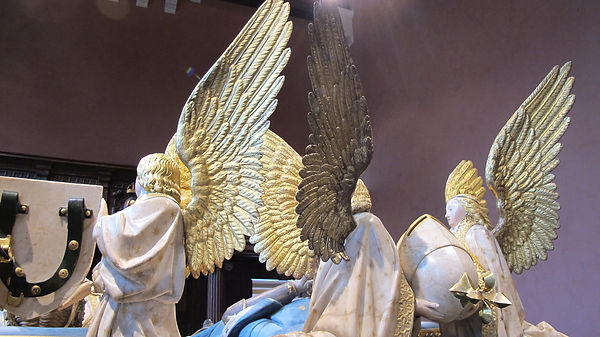

Some of the students went up into the musicians' gallery, as music would accompany the dukes' great banquets below.
The museum has immense carved and gilded triptychs (3-part altarpieces).

The four Dukes of Burgundy and their courtiers.


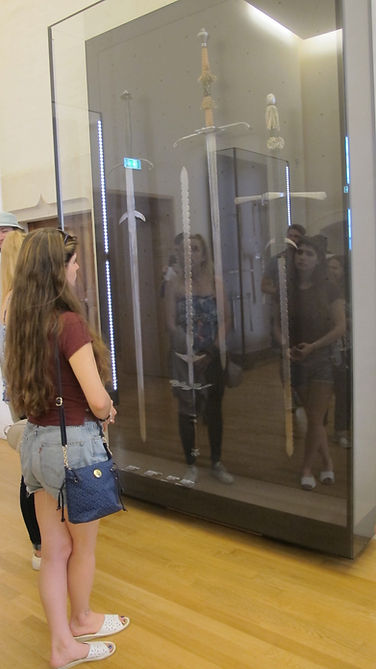
Even after studying the arts of warfare and visiting castles, the students were still amazed at the size of a two-handled sword.
How 15th-c. armor measures up with 21st-c. students.

After the museum, we walked back to St Michael's parish church where Emily presented St Michael while standing under his sculpture on the trumeau of the portal. As an archangel, he doesn't provide the same types of information as the human saints - no relics, birth or canonization dates.


The Museum of Sacred Art, housed in a former Cistercian convent, is filled with liturgical objects (chalices, patens, statues, paintings, altars, relics, vestments...) from churches around Dijon – gathered here for safe-keeping as well as public appreciation.
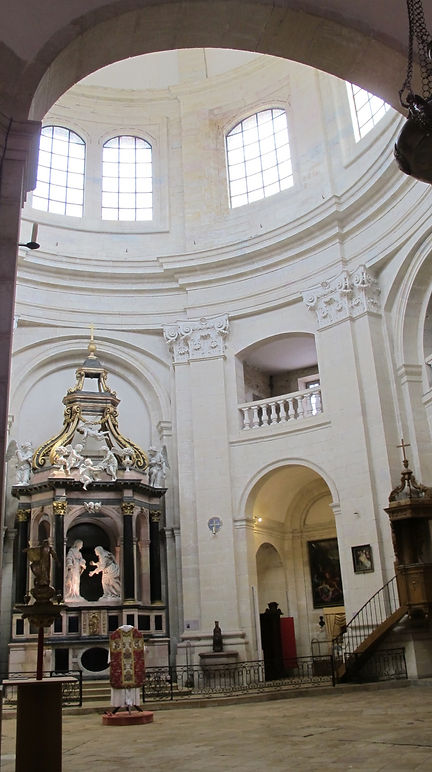


Students easily recognized images of the saints they had studied.

The Museum of Burgundian Life is located in another part of the former convent, and took us back to Dijon in the 19th c. Here we found a general store, toy store, clock maker, furrier, butcher shop, apothecary... and the industries that made Dijon famous - mustard, cassis, and cookies.

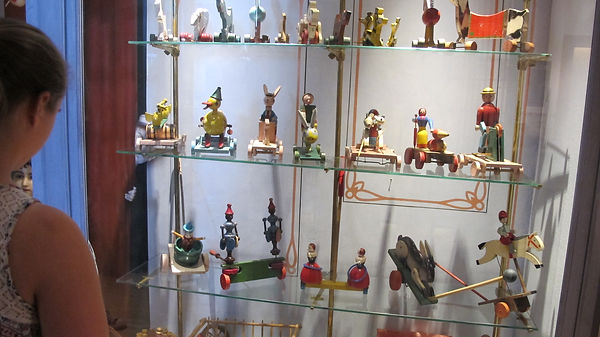

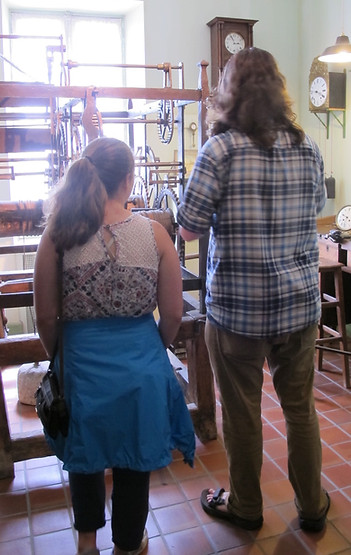

...as well as scenes of everyday life - lace-tatting, bonnet-making, how lighting a house evolved from tallow candles to electric lights, kitchen activities (butter and cheese making), and a marriage scene, complete with a hurdy-gurdy (a medieval instrument, still used in the 19th c. for popular events).


Some leisure time in the courtyard of the hotel.
